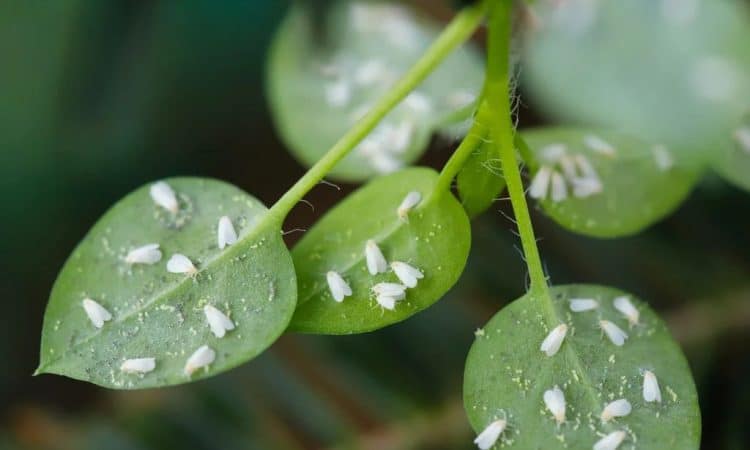
The whitefly is one of the most common and well known and destructive pests in agriculture, affecting a wide variety of crops, from vegetables and fruits to ornamental plants.
This little critter is a real plant-eater! It sucks the sap right out of plants, which can really hurt them. It can even spread viral diseases. But don’t fret! There are lots of ways to combat this pesky pest. You can try different techniques, from biological and cultural to chemical.
Knowledge of whitefly
Before addressing one’s own control strategies, it is essential to understand the whitefly. This small insect, just 1-2 mm in length, has a life cycle that includes eggs, nymphs and adults.
It reproduces rapidly in hot and humid conditions, making it especially prevalent in tropical climates and greenhouses. Therefore, first and foremost, it is important to correctly identify the presence of this pest.
Types of whitefly control
The control of this insect can be carried out by different techniques. The most advisable is to try the biological method, which is the most respectful with the environment, and then, in case of not being able to kill it, move on to other more aggressive and effective methods such as chemical ones.
Biological Control
Biological control is a valuable tool in the fight against whitefly. This approach uses natural enemies of the pest to keep its population under control. Some of the most effective biological agents include:
- Encarsia formosa
This parasitic wasp deposits its eggs inside whitefly nymphs, resulting in the destruction of the pest as the wasps emerge.
- Macrolophus pygmaeus
A predator that feeds on whitefly eggs and nymphs, helping to reduce their population.
- Entomopathogenic fungi
Such as Beauveria bassiana and Verticillium lecanii, which infect and kill whiteflies.
Implementing these biological agents can be highly effective, especially in controlled environments such as greenhouses, in the case of gardens this method becomes more complicated.
Chemical control
Although chemical control should be a last resort due to its environmental impacts and the possibility of developing resistance, in some cases it is necessary to manage severe infestations. Common insecticides include:
- Imidacloprid
A neonicotinoid that acts on the nervous system of insects, but should be used with caution due to its negative impact on bees and other pollinators. It can be found in garden stores and is available for home use.
- Horticultural oils and insecticidal soaps
Less toxic than traditional chemical insecticides, these products can suffocate whiteflies and are safe for use on a variety of plants.
It is crucial to follow the manufacturer’s instructions and use products responsibly to minimize environmental and health risks.
Cultural control
Cultural practices involve modifications in crop management to make the environment less favorable for whiteflies. Some effective strategies include:
- Crop rotation.
Changing crop types in a given area can disrupt the whitefly life cycle.
- Weed elimination
Weeds can serve as alternate hosts for whiteflies. Keeping fields free of weeds can reduce breeding opportunities for the pest.
- Use of netting
Installing netting in greenhouses and fields can prevent entry of whiteflies and other insects.
Whitefly control is a task that requires a multi-faceted approach where gardening and plant enthusiasts combine biological, chemical and cultural strategies. Minimal knowledge of the pest and implementation of appropriate practices are essential to keep whitefly populations under control and reduce their impact on crops.

